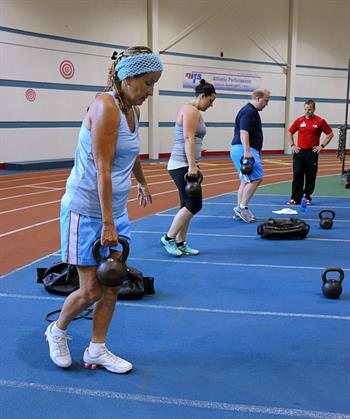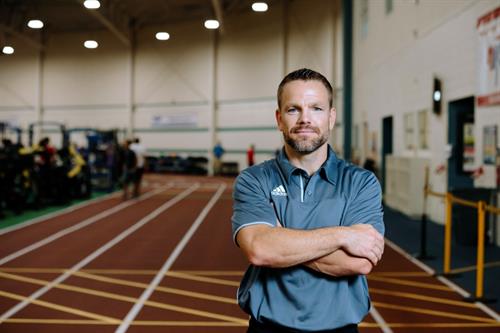Tony Maloney, ACSM-EP |
May
10, 2019

5 key concepts for cueing your clients, to help them get the results they deserve.
Key Points:
1. Make being a great communicator a focus to being a great coach.
2. Make cues for movement “sticky” and meaningful.
3. Shut-up, too much verbal cueing is detrimental.
Helping our clients achieve their best movement is, or better be, the most important and challenging task we have as fitness professionals. Clients all have different movement abilities as well as communication skills and life lessons that all play a role in how well they “get it” when it comes to establishing sound movement ability. Following some key concepts of how to communicate what you want to see in your client’s movement will lead to the results they are searching for.
Getting the best movement out of our clients is, or better be, the most important and challenging tasks we have as fitness professionals.
In my experience, the best developed program with all the bells and whistles means very little if you can’t communicate it to your client to deliver the results they are looking for and you ultimately promised to provide. Elaborately designed spreadsheets and program templates with the most up to date exercises will not deliver the goods unless you can. Your ability to communicate and cue the movement you are after will be the difference, not your workout template. Spend time becoming a great communicator of your program with strong cueing and delivery. This article will cover the five keys that I have found to be the most powerful to cueing proper movement.
In my experience, the best developed program with all the bells and whistles means very little if you can’t communicate it to your client to deliver the results they are looking for and you ultimately promised to provide.
1. Attack one thing at a time
When it comes to technique, prioritize what’s most important at the time and focus on making that better. Many times, correcting that one thing leads to the client understanding and attaining the skill or exercise. Grab the lowest hanging fruit first and work one thing at a time.
2. Use short and “sticky” cues
Keep each cue short, easy to understand and that has meaning to the client. The cue should “stick” after establishing meaning and using it during the movement. One of my favorites is “tuck the tail” when coaching a posterior pelvic tilt to provide a more neutral spine during a movement. I don’t have to do a whole of explaining of what the means and I get what I am after and the next time I use that cue they will know exactly what I am looking for -- it’s sticky.
3. Avoid too much technique talk
Even if the technical breakdown of a particular movement is correct, most of the information is meaningless to the client. You will be just clogging up the airways with terms and concepts that will get in the way of the client mastering the movement. Phrases like “extend to hip,” “squeeze your glutes” and “externally rotate your shoulder” will be a foreign language to most clients, causing a great deal of confusion.
4. External cueing is king
Use the environment and a client’s natural reflexes to help them understand a movement concept or body position. These external cues are so much more meaningful to the client, using fewer words than internal cues making them so much more effective. If I want a client to keep their chest up during a squat I will say “zip up your coat” or “proud chest”; or I can have them face a wall and they can’t touch it with any part of their body during the squat. Easy to understand with very little talking.
5. Shut up
Use as few cues as possible to get the movement you are after. Too much verbal coaching can overwhelm and confuse your client, leading to some big-time frustration if they can’t master the movement. Establish more meaning during rest periods, but continue to keep it short, to the point, and understandable. It’s OK for them to “feel the wrong” as it will allow for better learning, but don’t bombard them with words when they are trying to move.
Take Home:
Your ability to communicate as a coach will determine how successful your clients will be. Sharpen that skill, and you will be more successful as a coach and provide so much more to your client.
Ready to learn more? Watch the full session from Tony Maloney and Becky Langton and earn 3 CECs!
Coach It Up! Coaching and Cueing Proper Movement
Author: 
Tony Maloney ACSM-EP
Since coming to NIFS in 2008 Tony has worked with hundreds of clients of different fitness levels to achieve both fitness and lifestyle outcomes.Speaking to large corporate groups as well as to his large membership base is an opportunity Tony loves to take on and has presented to countless individuals ranging from College students, corporate leaders, members and fellow fitness professionals.Tony has been the Fitness Center Manager for 8 of his 11 years with NIFS and enjoys leading his team to provide the best experience for all the members at NIFS.